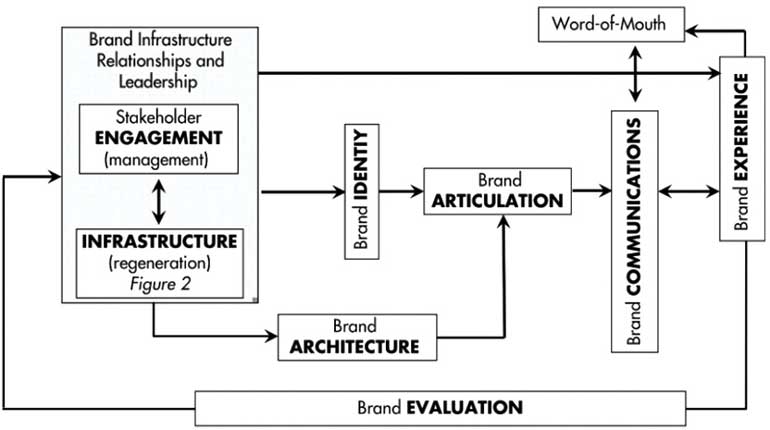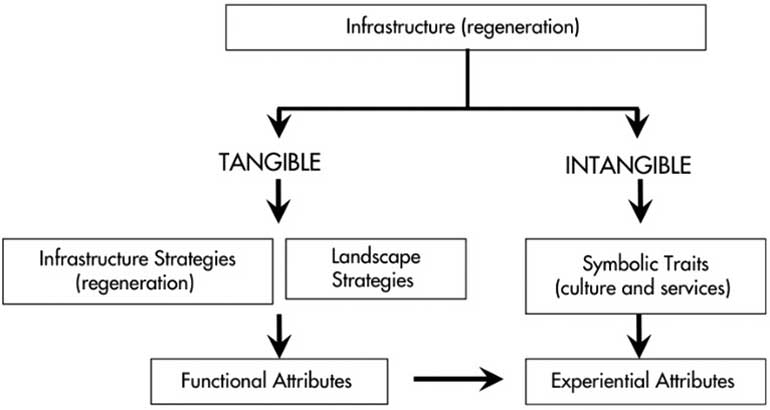The core objective of tourism marketing is to increase arrivals to the destination and drive high occupancy which will eventually result in getting higher foreign exchange earnings. In that context tourism marketing is more to do with selling than branding. However the power of tourism in driving destination awareness and image should not be underestimated
Place branding, and associated areas such as destination branding, location branding, and place image development, are receiving increasing attention by governments, people, investors and business community.
There is a case for arguing that place branding has its foundation in the tourism marketing field, but increasingly, places need to consider branding in a wide range of contexts and in respect to the management of brand image and the brand experience for a wide range of stakeholders. As such, interest in place image and branding is no longer restricted to those towns, cities, regions, and countries that are viewed as tourist destinations.
With fierce global competition fuelled by improvements of public transport and free movement of goods and people, places are facing increased substitutability and competition and must provide an environment that not only effectively competes for new resources, foreign investment, residents, and visitors but also provides an environment that sustains and satisfies exiting economic, commercial, and residential activity.
Some commentators suggest that as the economic base of many places is eroded, places are in competition with each other for survival (Kerr, 2006; Olins, 2002). It seems that the question facing place is not whether to brand but how to brand. There is a growing body of practice and research around place branding.
Place branding concepts and models
Place branding is defined as the practice of applying brand strategy and other marketing techniques to the economic and sociopolitical developments of towns, cities, regions, and countries (Anholt, 2004). More specifically, Lodge (2006) suggests that holistic place branding ‘encompasses everything a place wishes to sell’ and that the ‘understandings and experiences of places are mediated by a range of everyday texts through which landscapes are presented affirming that place brands have transcended into a composite construct.
Hankinson (2009) emphasises the need for place branding to extend beyond a focus on the creation of images to an understanding of the execution of the promised experience. Whilst a number of authors comment on the process of place brand management, often in the context of a specific case study, most previous research does not attempt to offer a holistic model of brand management that can inform practice and theory development in this field.
Questions: What are we now? What are our options? What do we want to be? What do we need to do? The Strategic Place Branding Model(SPBM) by Hanna and Rowly postulates that the beginning lies in conducting a situational analysis of the tangible and intangible elements and the strengths and weaknesses of the components place, people, processes, and partners, and concludes by asserting the development of action plans for the aforementioned components.
SPBM model offers a more all-embracing and integrative perspective on place brand management. The SPBM model is shown in Figures 1. The key components of the model are: brand evaluation, stakeholder engagement (management), infrastructure (regeneration), brand identity, brand architecture, brand articulation, marketing communications, brand experience, and word of mouth. Figure 2 shows the sub-components of infrastructure (regeneration).
Within each component a number of processes and activities take place. Depending on the specific components, these processes and activities may involve marketing professionals, citizens, visitors, and a range of other stakeholders. It is important to acknowledge that the processes in these components occur, whether or not any agency takes an active and strategic approach to brand management. However, without such proactive interventions, the outworking of the process may be a disappointing brand experience, negative word of mouth, and ineffective marketing communications.
A clear view of the components in the place brand-management process is a firm platform for achieving a coherent brand identity, creating satisfying brand experiences, and driving positive word of mouth. The arrows on the model indicate influence relationships between components. For example, the model shows that the ‘brand communications’ component influences and is influenced by the ‘brand experience’ component.

Place brand-management components
Prior to discussing the individual components of the model, however, it may be useful to explain the central significance of the space denoted in Figure 1 by the term ‘brand infrastructure relationships and leadership’. This arena is where the brand identity is created, and the complex dynamics between stakeholders, their engagement, and interests and infrastructure are worked through. Developing brand identity is dependent on the effectiveness of brand leadership in engaging and managing stakeholders on the basis of shared objectives.
It is the responsibility of management to engage all levels of stakeholders in capital development (Rainisto, 2003). The multifaceted nature of places requires leadership to permeate; the process of place brand management requires cooperation negating any form of coercion. Infrastructure strategies must consider the diversity of stakeholder needs and the limitations of the place brand with regard to its infrastructure and environment (Balakrishnan, 2008; Gaggiotti et al., 2008).
The role of leadership should be supporting the establishment of partnerships and networks by providing focus and fostering commitment. As Figure 2 shows, the infrastructure component is concerned with both the tangible and intangible attributes of the brand. Physical and environmental infrastructure strategies such as those associated with regeneration are important in driving the functional attributes of the place brand. On the other hand, there is also a need to establish the symbolic traits of place in order to deliver on the experiential attributes of the brand. Implicit in this model then are: (a) the importance of conceptualising the place brand as being about both image and experience; (b) the central significance of the physical environment on the brand experience; and (c) the complex but pivotal role of stakeholders in the brand- building process.

Brand evaluation
Brand evaluation refers to the processes that are undertaken in order to gather feedback on brand image and experience. Monitoring expectations and satisfaction requires close collaboration with stakeholders to ensure brand infrastructure meets and exceeds expectations. Brand evaluation is central to the evolution of the brand and its experience.
Stakeholder engagement (management)/stakeholder engagement (management) is the component that embraces the processes whereby stakeholders are identified, their interests surfaced, and interactions managed. Stakeholder engagement is important in place branding, and arguably, the central significance of multiple stakeholders, some with their own brands, in the branding process has been recognised to be one of the distinguishing features of place branding as compared with mainstream banding.
Place brand attributes are not only created and influenced by brand managers and their organisations, but are the product of stakeholder networks and partnerships (Parkerson & Saunders, 2005). The significance of each network or partnership is influenced by evolving dynamics (Murphy et al., 2005; Zineldin, 2004). Where the relationship between stakeholders lacks coordination, the dynamic is mirrored in the response relationships between the consumer and the brand (Hankinson, 2004a).
Infrastructure
Brand infrastructure (regeneration) is the component that represents the existence, accessibility, and sufficiency of the functional (tangible) and experiential (intangible) place attributes, and the possible need for their renovation and regeneration. The ability of the place brand to support the positioning of its experiential attributes is dependent on stakeholder impact, negative environmental consequences, and the changing nature of the place in terms of external influences (Foley & Fahy, 2004). Delivery of the brand experience requires investment in facilities and services to create or improve the various characteristics utilised by the place.
Functional attributes are achieved through infrastructure strategies and landscape strategies. These embrace the built environment, public spaces considering urban design, green spaces, and architecture. Experiential attributes are achieved through a combination of symbolic traits and the functional attributes. Symbolic traits include the provision of cultural entertainment and services.
Brand identity is the component associated with the creation of the essence of the brand. Key elements in brand identity are the functional and experiential attributes of the brand. Brand identity is the active part of the image-building process (Rainisto, 2003) involving the creation and maintenance of a unique set of associations (Aaker, 1996, p. 68) projected through brand elements (Keller, 1998, p. 166). Image is the sum of beliefs, ideas, and impressions that people have of the place (Harmaakorpi et al., 2008).
Brand identity development takes place through the analysis of the strengths and weaknesses embedded in the tangible and intangible attributes of the place Brand architecture Brand architecture is the component that focuses on the process of designing and managing brand portfolios. Although places may seek to support a central place brand, places are composed of sub-brands associated with or owned by communities within. Such brands may be owned by local authorities, tourists, organisations, businesses (of all sizes), and community services (such as schools) and groups.
Brand architecture then not only describes the relationship between these brands, in terms of image and experience, but also negotiates conflicts and contradictions between the brands in the place and the stakeholder interests aligned behind those brands. Aaker and Joachimsthaler (2000) propose the brand relationship spectrum as a tool for managing architecture, consisting of four strategies: house-of-brands, endorsed brands, sub-brand, and branded-house.
Brand articulation
Brand articulation is the component that focuses on the processes associated with the expression of the brand through its verbal and visual identity through the choice and design of it place name, logo, colour palettes, and photographs.
Brand communications
Brand communications is the component that focuses on the activities associated with the communication of the brand identity. As such, it builds on and is tightly coupled with the brand articulation component, and has a direct influence on the perceptions and reality of the brand experience. All of the discussed models consider brand communications to be an integral component of the place brand-management process.
Kavaratzis (2004) discusses secondary communications as the promotional component and the one variable of the marketing mix that has been so far adopted by places with great ease. Similarly, Cai. (2002) and Hankinson (2004a) discuss marketing and media communications respectively. Baker (2007) goes a step further and raises the issue of integrated brand communications. He argues that the challenge is to embed messages into as many concurrent marketing applications as possible (Baker, 2007), and offers a range of practical actions for achieving this. Foley and Fahy (2004) also put the case that sustainability of the brand is related not only to the messages delivered but also to the degree of shared meanings that is contained in the message.
Word of mouth
Word of mouth (WOM) is the component that encompasses the processes associated with the informal communication between ‘consumers’ of the brand experience. WOM remains a powerful form of communication (Baker, 2007; Mazzarol, Sweeney, & Soutar, 2007). WOM provides highly credible means of persuasion, since the communicator is not seen as having a vested interest.
The literature depicts three basic personal motives for engaging in WOM activity: the obligation to share information through a sense of community duty, pleasure derived from sharing information, and the desire to help others (Walsh, Gwinner, & Swanson, 2004). Attention to WOM is a reminder that the brand is not what the marketer depicts but that it is dependent on the stakeholders’ experience (Baker, 2007, p. 152).
WOM is represented in the model as interacting with brand communication and brand experience. In relation to the first of these, it is suggested that WOM can triple the effectiveness of advertising and also that brand communications can act as a WOM trigger (Hogan, Lemon, & Libai, 2004). Further, it is suggested that as a two-way influencing process, the relationship between WOM and brand communications may be used to monitor the content of communications to establish whether the brand experience accords with brand communications.
The most important influencer of WOM is brand experience. The desire to act as an advocate on the basis of positive place experience is highlighted (Balakrishnan, 2008; Mazzarol et al., 2007). However, satisfied customers are not always loyal and may not always engage in WOM activity (Reicheld, 1994), and dissatisfied customers may also generate negative WOM. The relationship between brand experience and WOM is therefore complex. Additionally, the reciprocated relationship between brand communications and WOM depicts the latter as not controllable by marketers.
Brand experience
Brand experience is the component in which the consumer engages with the brand. Through this engagement, consumers formulate perceptions of the brand experience and interpret the brand identity to create their own notion of brand image. In other words, the brand experience component subsumes brand image.
Whilst brand perceptions may be influenced by brand articulation and marketing communications, there is a need to consider consumers’ overall experiences with the brand, as they are delivered through various channels and through embracing the service experience and sensory delights, based on sights, sounds, smells, and tastes (Balakrishnan, 2008). Brand infrastructure relationships have a direct and significant impact on brand experience.
Conclusions and recommendations
Place brands are complex constructs, and it is therefore not easy to construct a model of place-branding processes. First, the SPBM model represents the process of place branding and its key components. Second, branding is an interactive and evolutionary process. In other words, it is not a ‘once and for all project’. Third, stakeholder engagement and place brand infrastructure are pivotal to place branding, and this is the aspect of place brand management that distinguishes place branding from product and corporate branding models
Tourism marketing
The core objective of tourism marketing is to increase arrivals to the destination and drive high occupancy which will eventually result in getting higher foreign exchange earnings. In that context tourism marketing is more to do with selling than branding. However the power of tourism in driving destination awareness and image should not be underestimated.
In a recent study of the Cuban tourism marketing campaign of Cuba in USA showed that it is not only helping to increase the number of American tourist in Cuba but also increased the overall perception of Cuba among those who were exposed to the campaign. This phenomena is now called “spillover effect” of tourism marketing. Hence tourism marketing should now go beyond showing beautiful “me too” kind of images to moments which reflects the reality of the destination with sense of place and experience. Authentic experiences coupled with discoveries will make a powerful statement for a country to market as a tourist destination. Further tourism marketing should take the actual experience on ground before you make a promotional campaign.
Finally, the key outcome of the branding process is not brand image but rather brand experience. Brand initiatives must be based upon the ‘brand reality’ and not only on the communication of the image.


אין תגובות:
הוסף רשומת תגובה